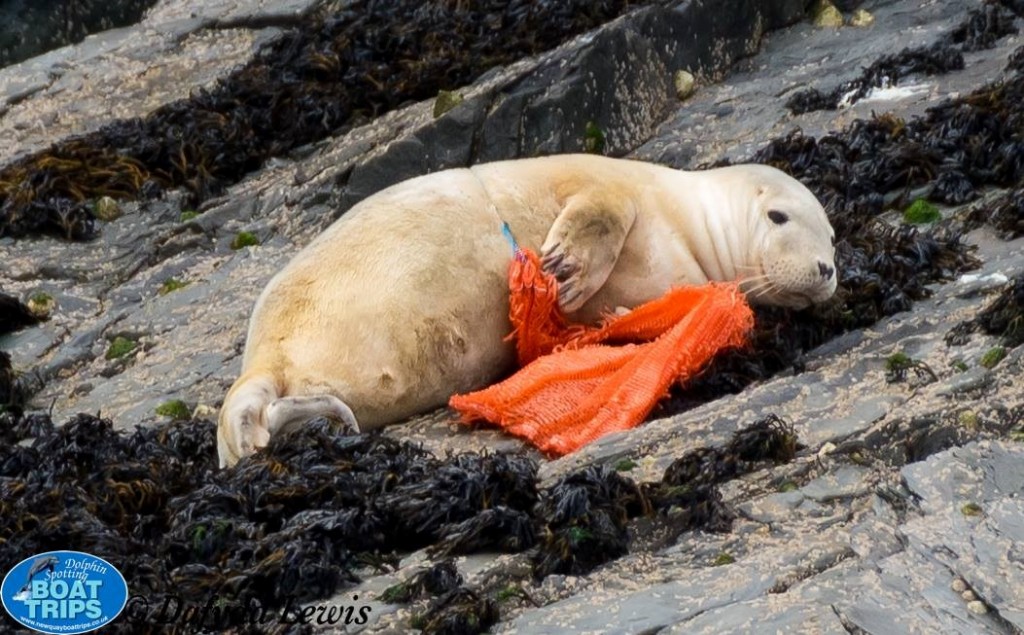Plastic debris is one of the biggest pollution problems that the marine environment faces today. As well as ingestion of plastics, entanglement poses one of the biggest threats to marine mammals. A comprehensive list by scientists found that a third of all marine mammals are affected by plastic debris entanglement. Given that many items found in marine plastic debris such as fishing gear, plastic bottles and bags take between a few decades to several hundred years to degrade, it is a problem that is unlikely to disappear in the near future.
A large part of this plastic debris is either from the fishing industry or from packaging. Decades ago, fishing gear was made out of natural fibres and material, however nowadays fishing gear is made of durable synthetic materials, which make them long lasting but also non-biodegradable. Additionally the many plastic products that we use in our daily lives eventually get thrown away and often end up in the sea.
Cetaceans, particularly lunge-feeders such as the humpback whale are at risk, and although entanglement may not strangulate large cetaceans as easily, some individuals have been spotted dragging massive nets, lobster pots and buoys around, affecting their ability to swim and dive and ultimately leading to fatality. An interesting study from 2016 investigated the entanglement risks of humpback whales in Scottish waters (http://www.seawatchfoundation.org.uk/wp-content/uploads/2016/12/Ryan_et-al_IWC.pdf).
Seals and particularly young seals are at risk from plastic entanglement. With their curious nature, they naturally investigate objects in their environment, swim around in floating debris, as well as popping their heads out of the water into loops and nooses drifting in and on the water. If this happens whilst they are still young and they do not get disentangled, they will continue growing larger in the marine debris. Often this does not stretch or fall off as the young seals grow and will eventually strangulate or cut deep wounds into them. Sea Watch, members of the public and the people from Dolphin Spotting Boat Trips just recently spotted an entangled seal not far from New Quay Harbour. Trained professionals were contacted and informed, but the seal was not seen again so it is uncertain whether it perhaps was able to free itself or whether it remains entangled.
A photo of the entangled seal from Dolphin Spotting Boat Trips.
What to do when you see an entangled animal?
If you ever come across an entangled seal, cetacean or other marine animal the best thing to do is to contact the British Divers Marine Life Rescue (BDMLR), the RSPCA for England and Wales or the SSPCA for Scotland. Never approach wildlife on your own to avoid injuries and wait for assistance from trained professionals.
BDMLR hotline: 01825 765546 (office hours) or 07787 433412 (out of hours)
RSPCA hotline (England & Wales): 0300 1234 999
SSPCA hotline (Scotland): 03000 999 999
Written by Lea Brandes, Research Intern, 2017
References
U.S. National Park Service; Mote Marine Lab, Sarasota, FL.
http://ec.europa.eu/environment/integration/research/newsalert/pdf/IR1_en.pdf
http://www.bbc.co.uk/nature/22280481
http://www.bdmlr.org.uk/index.php?page=stranded-animals
http://www.oceanhealthindex.org/news/Death_By_Plastic
http://www.seawatchfoundation.org.uk/wp-content/uploads/2016/12/Ryan_et-al_IWC.pdf

























